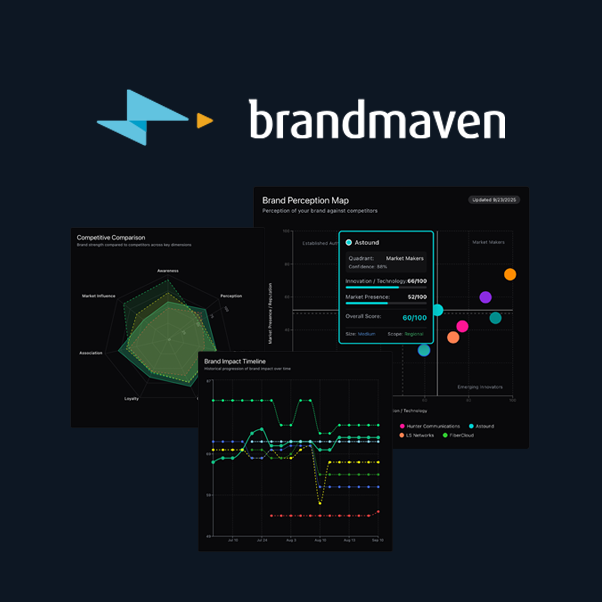The New Must-Have Guideline That's Missing from Your Brand Book
Why ChatGPT Writing Prompts Will Become the Next Essential Element in Brand Guidelines
Brand guidelines have long served as a blueprint for maintaining a brand's identity across all touchpoints. Traditionally, these guidelines or “Brand Books” cover areas like logo usage, typography, color palettes, and tone of voice. But with the rapid adoption of generative AI tools like ChatGPT in the content creation process, I believe a new element will emerge as a crucial addition to these guides: AI writing prompts. Including ChatGPT prompts in brand guidelines will become just as essential as color guidelines. Here’s why.
The Rise of Generative AI in Content Creation
Odds are, your content creators are increasingly turning to generative AI tools like ChatGPT for sparking ideas, drafting social media posts, developing ad concepts, creating sales presentations, and even scripting videos. These tools are valuable for their ability to speed up content production and provide creative inspiration. However, with AI-generated content becoming an integral part of the workflow, the need for maintaining a consistent brand voice becomes more urgent.
While most brands already provide detailed tone of voice guidelines to ensure a consistent style across human-generated content, generative AI introduces new variables. Different prompts can yield vastly different outputs.
In a previous blog article, we touched on concerns about how using AI to generate messaging in “high-leverage” channels like your website and brand campaigns can distort your brand voice. Without specific AI prompts, it’s a certainty that using GenAI for content generation will result in inconsistency across channels. This is where standardized writing prompts come in.
Why AI Prompts Should Be Part of Brand Guidelines
1. Ensuring Consistency in Brand Voice
Just as brand guidelines provide a roadmap for color usage and tone, AI writing prompts can serve as a template to help generative AI maintain the brand’s established voice. By including standardized prompts in brand guidelines, companies can guide how tools like ChatGPT respond to queries, ensuring that the content more closely aligns with the brand's tone, values, and messaging.
For example, a brand that aims for a friendly, conversational tone might include prompts like, "Write a casual and upbeat introduction for a blog post about [topic]," whereas a more formal brand might specify, "Generate a professional and informative summary on [topic]." These nuanced differences help ensure that AI-generated content aligns with the brand's style, even when different content creators are at the helm.
2. Facilitating Faster Onboarding for Content Creators
Including AI prompts in brand guidelines can significantly speed up the onboarding process for new content creators. Instead of experimenting with how to "translate" tone of voice guidelines into AI prompts on their own, content creators can use pre-defined prompts that have already been fine-tuned for the brand. This can help new team members quickly produce content that matches the brand's established voice, reducing the learning curve and accelerating productivity.
3. Enhancing Creative Efficiency Without Compromising Quality
Generative AI tools are excellent for sparking creativity, but they can also produce content that varies widely in quality and style. By standardizing AI prompts, brands can provide a creative jump-off point while maintaining guardrails for consistency. This approach allows content creators to play around with AI tools and generate fresh ideas while staying true to the brand's voice.
4. Adapting to Rapidly Evolving AI Capabilities
The capabilities of AI writing tools are evolving rapidly, with each iteration offering more sophisticated text generation and customization. By including AI prompts as part of brand guidelines, brands can keep pace with these developments. Guidelines can be periodically updated with new prompts that leverage the latest features, ensuring that the brand's AI-driven content remains cutting-edge.
5. Strengthening Brand Governance
Inconsistent use of brand elements like colors and fonts can dilute brand identity, and the same is true for the tone of voice. With content being generated by AI, brands need a way to govern the quality and consistency of that output. Providing prompt guidelines is an actionable way to maintain control over how AI tools contribute to brand communication. It offers a concrete method for quality assurance, ensuring that all content — whether AI- or human-generated — meets the brand's standards.
What Should AI Prompt Guidelines Include?
To make AI prompts a meaningful part of brand guidelines, brands should consider including the following elements:
- Sample Prompts for Various Use Cases: Provide example prompts for different content types, such as blog posts, social media captions, email copy, and ad headlines.
- Tone Adjustments and Style Specifications: Outline variations in prompts based on the intended tone (e.g., formal vs. casual) and audience segment.
- Instructions for Fine-Tuning Outputs: Offer guidance on how to iterate prompts to refine AI-generated content until it meets the brand’s standards.
- Do's and Don'ts for Prompts: Just as guidelines specify what to avoid in visual design, they should also include what not to do when crafting prompts, such as words or phrases that don’t align with the brand’s voice.
- Framework for AI Ethics and Governance: Include ethical guidelines for using AI, emphasizing transparency, data privacy, and the brand’s position on AI-generated content.
The Future of Brand Guidelines: GenAI as a Core Element
Incorporating AI writing prompts into brand guidelines signals a shift in how brands approach their identity. It's an acknowledgment that AI is more than just a tool — it’s a collaborator in the content creation process. As such, it requires its own set of guidelines to ensure that the content produced remains true to the brand’s voice and values.
While some may see AI prompt guidelines as a "nice-to-have" today, they will soon be viewed as essential as specifying the exact hex code of a brand's primary color. In a world where generative AI is not just a trend but a staple in content creation, prompt guidelines will be the new standard for ensuring brand consistency across all digital and physical channels.
Integrating AI prompts into brand guidelines is a forward-looking strategy that allows companies to harness the power of generative AI without compromising their brand's integrity. By treating these prompts with the same level of detail as color palettes or logo placement rules, brands can create a more cohesive and adaptive identity in the age of AI-driven content.
Be sure to subscribe to our Humanize Tech newsletter. We'll keep you in the loop when we publish more content in our Gen AI and Branding series. Up next: Tips for How to Govern the Use of Gen AI for Images, Graphics, and Visuals.




